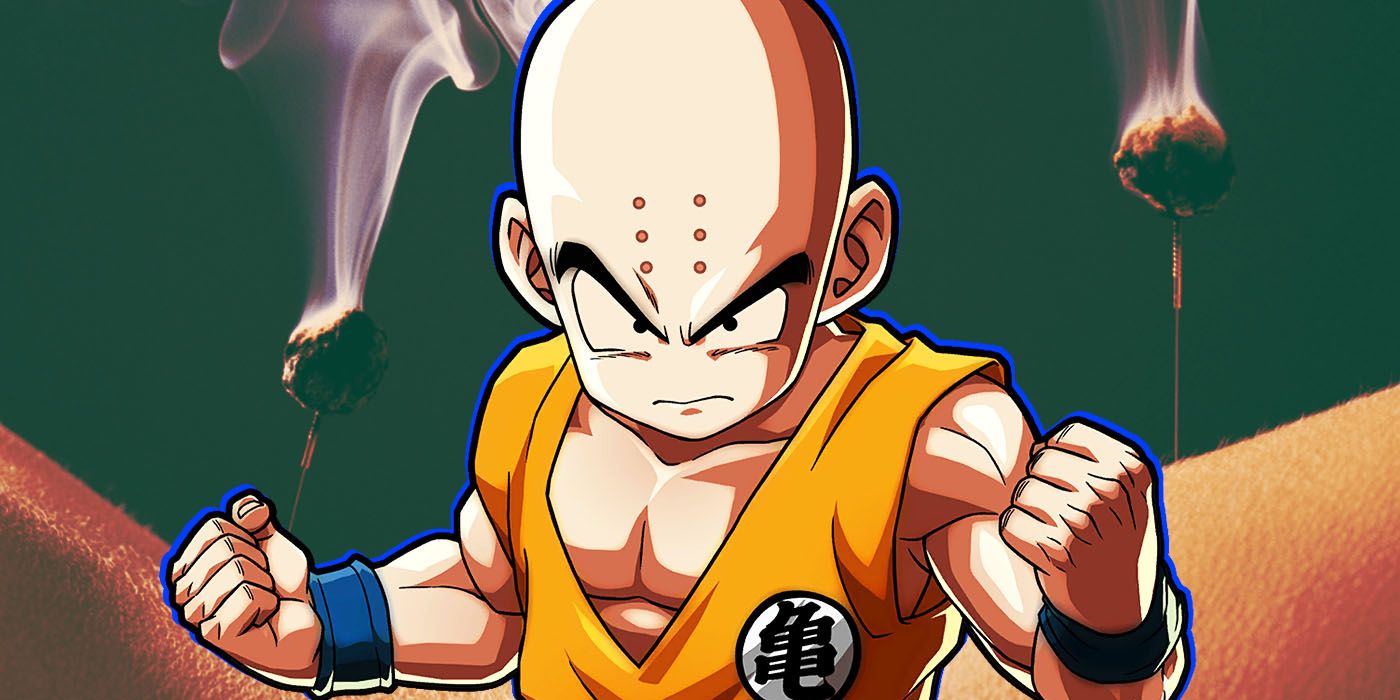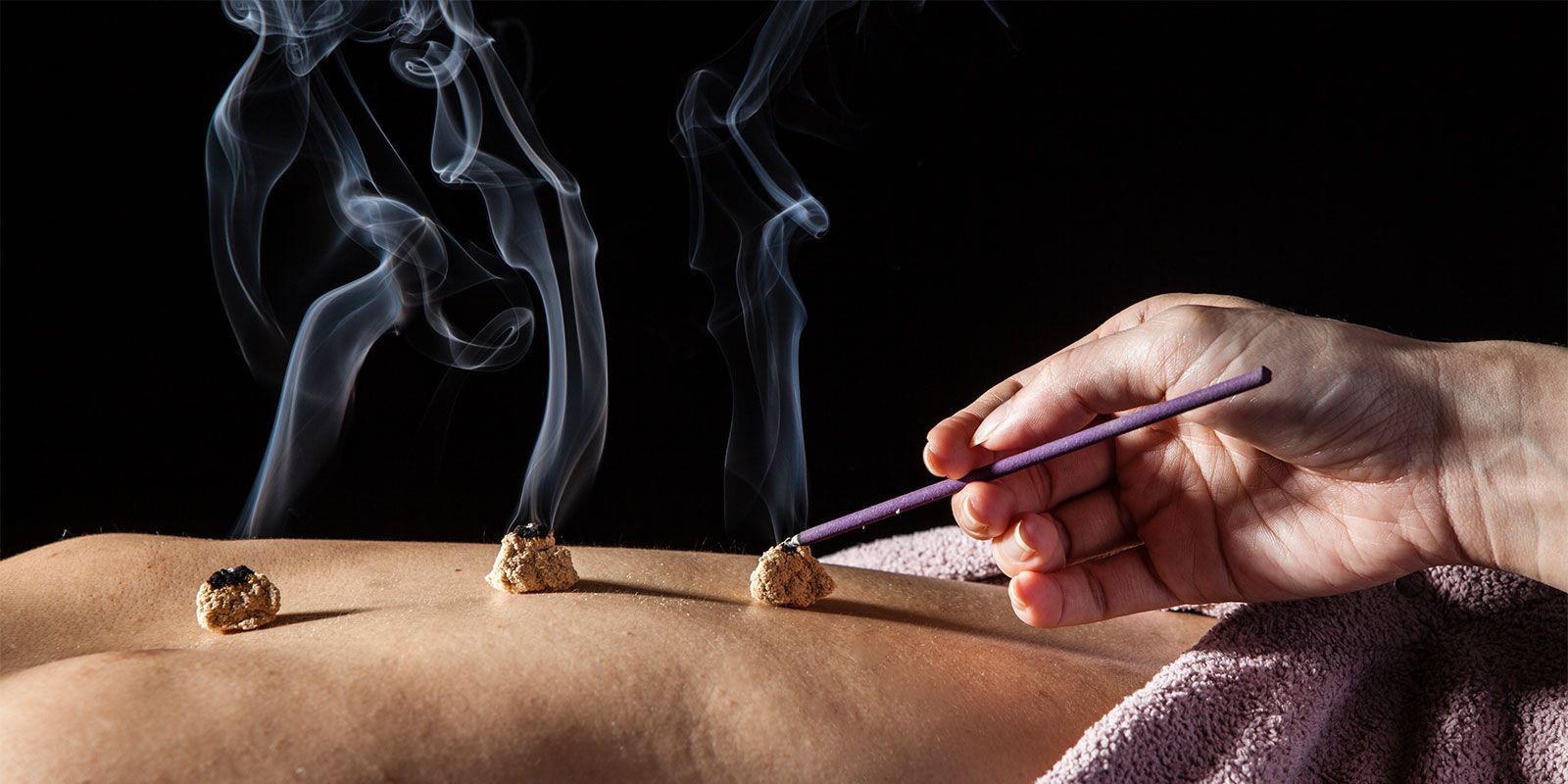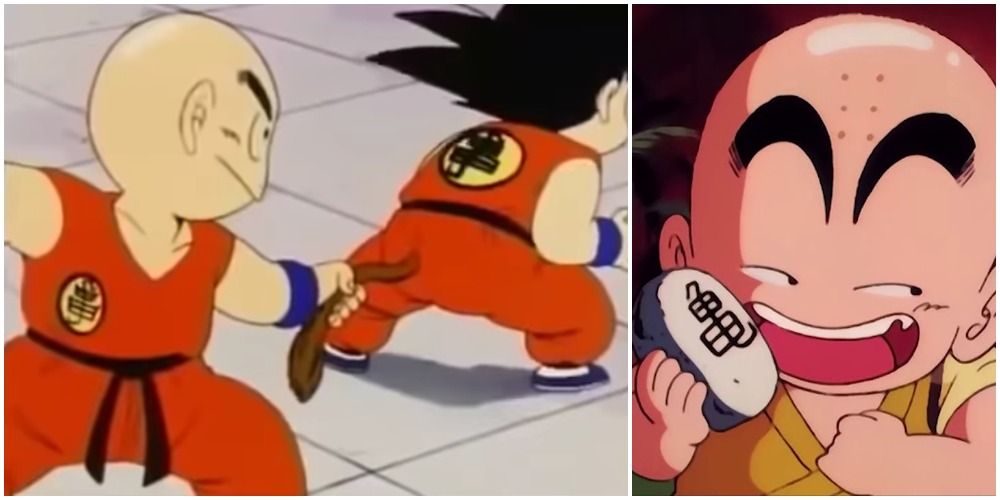Most people don't know the specific origin of the six dots on Krillin's head. Even those who watched Dragon Ball from the beginning wouldn't be able to explain what they're doing there. The most they could say is that they've been with him ever since his debut in the series. The true purpose of these dots, however, is not elaborated on in the story or dialogue.
Discerning the hidden meaning of Krillin's dots will require a look at the source material that inspired the Dragon Ball narrative. Many of the series' settings, martial arts, plot points, ideologies, and more find their inspiration in the East Asian culture of countries like Japan, China, and India. Assuming this holds true for Krillin's dots, then they're most likely the result of moxibustion burns applied to Shaolin monks.
Moxibustion was originally practiced in China as a form of alternative medicine. By burning dried mugwort (moxa) incense and applying it to meridian points, it could be used to treat all sorts of illnesses and ailments. It was also used to stimulate the flow of blood and qi; in Dragon Ball, the latter is better known as Ki (気) or energy.
There are several methods of moxibustion that are both permanent and temporary. Permanent options involve applying cones of moxa incense to a designated acupuncture point and burning it to the point where it leaves a scar. Those who don't want scars can either remove the moxa before permanent damage to the skin can be caused or simply use stick-on moxa. In Krillin's case, he probably used the direct-scarring method.
Another use of moxibustion is employed by Buddhist or Shaolin monks. As part of their indoctrination, aspiring monks must have their heads shaved and their foreheads emblazoned with these dots. Krillin originally came from the Orin Temple, whose practitioners all resemble Shaolin Monks. Just as they shave their heads and wear outfits like Shaolin monks, it's likely that they also undergo moxibustion for similar reasons to their real-world counterparts.
The three sets of dots represent a number of different things. First, they represent the Three Jewels; the Buddha, the Dharma (the Buddha's teachings), and the Sangha (the disciples of the Buddha). They also represent the three vows a Buddhist must take; ridding oneself of bad habits, cultivating good thoughts, and accumulating wisdom. Finally, the dots represent Buddhists' three main forms of training; morality and discipline, concentration, and wisdom. In general, the dots are supposed to represent the monks' ideals and virtues.
The funny thing about Krillin is that, despite having the initial outward appearance of a Shaolin monk, he didn't embody many of their principles. Where Shaolin monks reject earthly pleasures in the pursuit of enlightenment, Krillin became a martial artist with the expressed intent of attracting ladies. He was also impatient, fought dirty, and always looked for shortcuts in his training with Master Roshi.
Even if Krillin can't be said to fully embody the apparent principles of his dots, nobody can question how he's developed as a person. Not only did he start taking his martial arts training seriously, but he's also a selfless and courageous defender of Earth. In any case, the six dots are here to stay.



